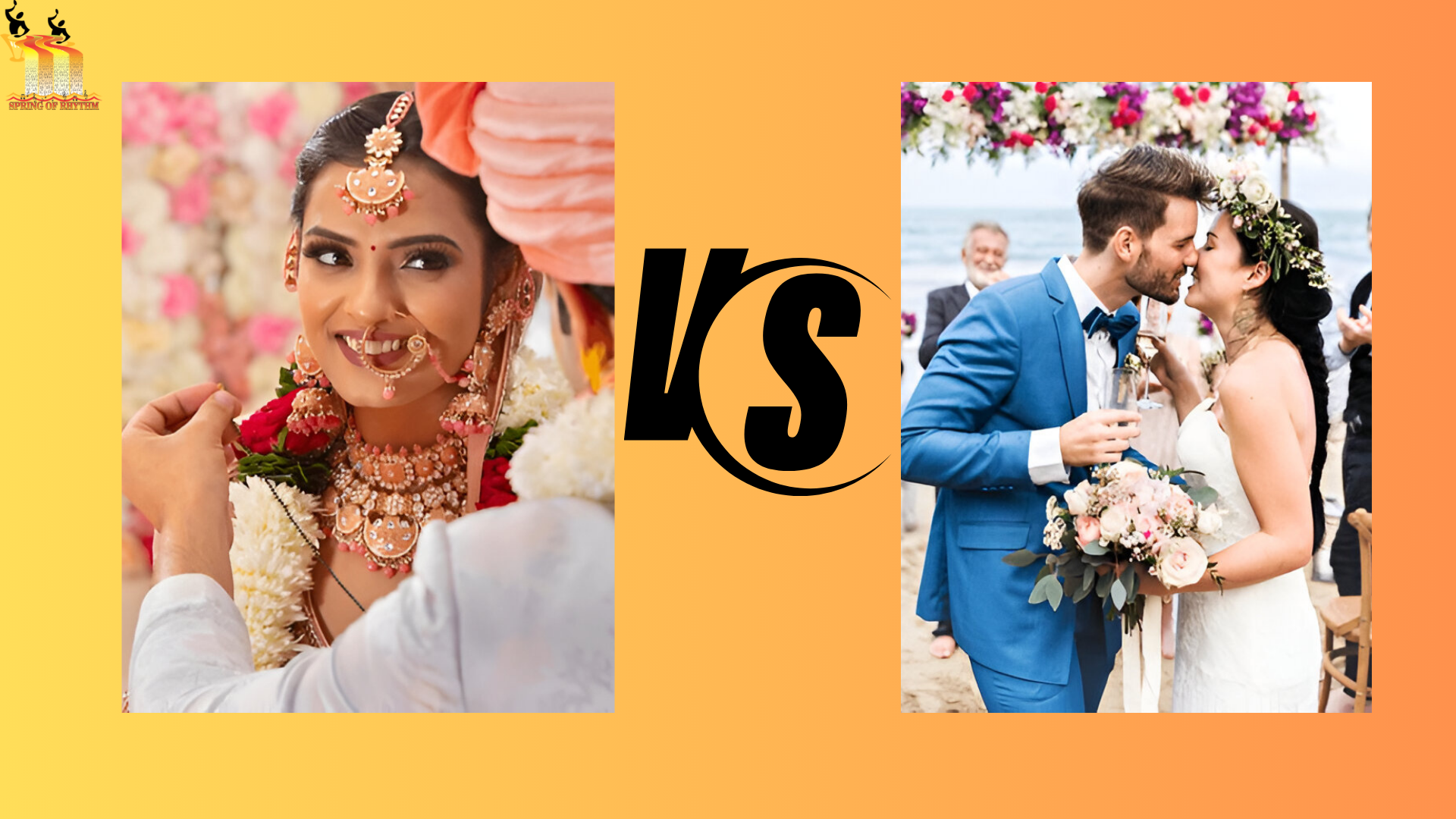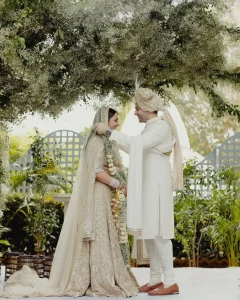Planning a wedding is an exciting yet challenging task. Every culture has its own traditions, rituals, and style of celebration. Two of the most popular wedding styles in the world are Indian weddings and Western weddings. While both celebrate love and commitment, their planning and execution differ in many ways. At Spring Of Rhythm, we specialize in bringing dream weddings to life. Whether you prefer a grand Indian wedding or an elegant Western ceremony, our expertise ensures a flawless event. Let’s explore the key differences between Indian and Western weddings.
1. Wedding Duration and Events
Indian Weddings:
Indian weddings are usually multi-day events with various pre-wedding, wedding, and post-wedding ceremonies. Some of the key rituals include:
- Roka or Engagement Ceremony – Marks the official commitment.
- Haldi Ceremony – A turmeric ritual for good luck.
- Mehendi Ceremony – Brides get henna designs applied to their hands and feet.
- Sangeet Night – A night of music and dance.
- Baraat – The groom’s grand procession to the wedding venue.
- Wedding Rituals – Depending on the region, different customs take place (e.g., Sindoor, Mangal Phera, Kanyadaan).
- Reception – A grand celebration with food, music, and dancing.
Western Weddings:
Western weddings are typically one-day events with a clear structure:
- Rehearsal Dinner – A small gathering before the wedding.
- Wedding Ceremony – Exchange of vows and rings, led by an officiant.
- Cocktail Hour – Guests socialize before the reception.
- Reception – Dinner, speeches, first dance, cake-cutting, and entertainment.
2. Venue and Decoration
Indian Weddings:
- Indian weddings are often lavish and grand. They take place in banquet halls, palaces, outdoor gardens, or temples.
- Decorations are colorful with floral arrangements, mandaps, drapes, and traditional elements like diyas and rangoli.
- Themes are vibrant, reflecting Indian culture.
Western Weddings:
- Western weddings are usually held in churches, gardens, beaches, or resorts.
- The decor is elegant and minimalistic with pastel shades, candles, and floral centerpieces.
- Aisle decorations and floral arches are common.
3. Wedding Attire
Indian Weddings:
- Brides wear heavy lehengas or sarees in bright colors like red, pink, and gold.
- Grooms wear sherwanis or traditional suits with turbans.
- Jewelry and accessories play a major role.
- Brides often wear mangalsutra, bangles, nose rings, and bindis.
Western Weddings:
- Brides wear white gowns with veils.
- Grooms wear suits or tuxedos.
- Accessories include simple jewelry and bouquets.
4. Rituals and Traditions
Indian Weddings:
- Indian weddings are deeply rooted in traditions. Rituals vary based on religion and region.
- The main ceremony takes place under a Mandap (wedding canopy).
- Fire rituals (Agni Pooja) and seven vows (Saat Phere) are performed.
- Family and relatives play an active role in the wedding rituals.
Western Weddings:
- The ceremony is short and formal.
- The couple exchanges vows and rings.
- The wedding concludes with the phrase “You may now kiss the bride.”
- There is a first dance and cake-cutting ceremony.
5. Food and Catering
Indian Weddings:
- Indian weddings have a wide variety of dishes, usually buffet-style.
- The menu includes vegetarian and non-vegetarian options depending on the family’s customs.
- Traditional sweets like gulab jamun, jalebi, and rasgulla are popular.
- Indian weddings also feature live food stations and regional delicacies.
Western Weddings:
- Western weddings typically have a three-course meal or buffet.
- Dishes include soups, salads, main courses, and desserts.
- The wedding cake is an essential part of the celebration.
- Beverages, including wine and cocktails, are commonly served.
6. Entertainment and Music
Indian Weddings:
- Music and dance are a major part of Indian weddings.
- The Sangeet night includes Bollywood-style performances.
- Live bands, DJs, and dhol (drums) add to the excitement.
- The bride and groom often have choreographed dance performances.
Western Weddings:
- Western weddings feature live bands or DJs playing soft romantic tunes.
- The first dance is a key moment.
- Guests dance to pop, jazz, and contemporary music.
7. Guest List and Invitations
Indian Weddings:
- Indian weddings have a large guest list, often 300-1000+ attendees.
- Invitations are traditional and artistic, sometimes sent with sweets or gifts.
Western Weddings:
- Western weddings usually have smaller, intimate guest lists.
- Invitations are simple, often digital or printed.
FAQs
Q1. Which wedding style is more expensive: Indian or Western?
Indian weddings tend to be more expensive due to multiple events, grand decorations, and large guest lists. Western weddings focus on minimalism, making them relatively budget-friendly.
Q2. How long does an Indian wedding last?
Indian weddings usually last 3 to 5 days, with different ceremonies spread over multiple days.
Q3. Do Western weddings have pre-wedding ceremonies like Indian weddings?
Western weddings have rehearsal dinners, but they do not have elaborate pre-wedding rituals like Mehendi or Sangeet.
Q4. Can an Indian wedding be done in a Western style?
Yes! Many couples opt for a fusion wedding, blending traditions from both cultures for a unique celebration.
Final Thoughts
Both Indian and Western weddings have their unique charm and traditions. Indian weddings are known for their grand celebrations, deep-rooted traditions, and vibrant atmosphere, while Western weddings focus on simplicity, elegance, and emotional intimacy.
At Spring Of Rhythm, we specialize in planning and executing both Indian and Western weddings. Whether you want a grand traditional wedding or an intimate Western-style ceremony, our team ensures a seamless and memorable experience. Contact us today to make your dream wedding a reality!
For expert wedding planning, visit Spring Of Rhythm and let us create magic on your special day!



